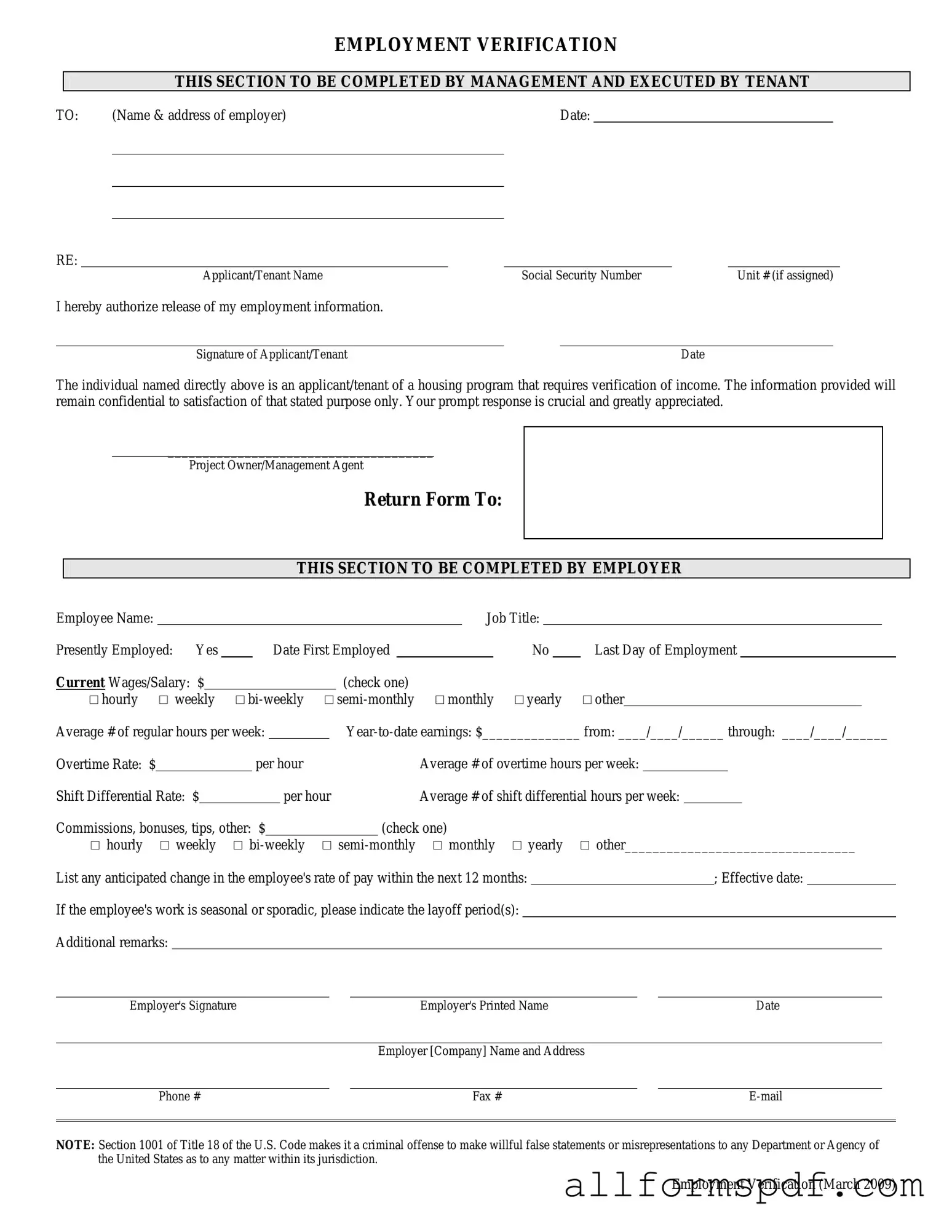Filling out an employment verification form can seem straightforward, but many people make common mistakes that can lead to delays or complications. One frequent error is providing incomplete information. When applicants skip sections or fail to include necessary details, it can slow down the verification process. Always ensure that every section of the form is filled out completely.
Another mistake is using outdated information. Job titles, dates of employment, and contact details can change over time. It's crucial to double-check that all information is current and accurate. Outdated information can lead to confusion and may even cause potential employers to question the reliability of the application.
Inconsistencies between the employment verification form and a resume or application can raise red flags. For example, if the dates of employment do not match up, it could suggest a lack of attention to detail or, worse, dishonesty. Always cross-reference your documents before submission to ensure consistency.
People often forget to include the correct contact information for their previous employers. Providing the wrong phone number or email address can hinder the verification process. It's essential to take a moment to confirm that the contact details are accurate and up-to-date.
Another common pitfall is neglecting to sign and date the form. A signature signifies that the information provided is accurate and that the applicant gives permission for the employer to verify their employment. Without a signature, the form may be considered invalid.
Some individuals may also overlook the importance of clear and legible handwriting. If the form is handwritten, it should be easy to read. Illegible writing can lead to misunderstandings and may cause delays in processing.
Additionally, failing to provide a reason for the verification request can be a mistake. Including a brief explanation can help the verifier understand the context and urgency of the request. This small detail can facilitate a smoother verification process.
People sometimes make the error of not following the specific instructions provided by the employer or organization requesting the verification. Each form may have unique requirements, and overlooking these can lead to rejection of the form. Always read the instructions carefully before filling out the form.
Rushing through the form can lead to simple errors. Taking the time to review and proofread the completed form can prevent careless mistakes. A thorough check can catch errors that might otherwise go unnoticed.
Lastly, many individuals fail to keep a copy of the completed form for their records. Having a copy can be beneficial if any issues arise later. It serves as a reference point and can help clarify any discrepancies that may come up during the verification process.
